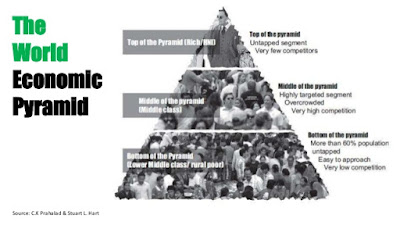
On Saturday, March 11th they launched another version of their annual program called Future Entrepreneurs. This is a free workshop series for high school students to explore creating their own career and designing their own future through a series of Saturday morning adventures. I was thrilled to be able to kick-off the 2017 edition with my dear friend and former teaching assistant, Anita Flajšlik, who has emerged in her own right as a wonderful leader in the entrepreneurial space in Croatia. She joined Agrivi almost 3 years ago and is an executive with game changing enterprise who is revolutionizing how farmers in 150 countries around the world manage their crops.
Together with the keen team from Ekonomska Klinika we were in entrusted with inspiring the capacity crowd of teenagers from over 15 different high schools and 1 elementary school to start their investigation. Anita began with sharing her story and how her entrepreneurial path evolved from a community and events organizer to a teaching assitant, international project manager to her current role in Agrivi. She held nothing back as the students could relate to her transformation from student to leader in rapid rise. When so many young people struggle with finding their own job these days, especially with unemployment of young people in Croatia estimated at 30%, Anita was a ray of hope. And hope, is what they need. To be able to see their own potential as she has and apply to something of global importance, in a place just a few towns over from your childhood home, is really helping bridge the world of what they want to be and where they are right now.
My take was to help them start as authentically as possible. Surveying what they love and what they are good at as so many of the top entrepreneurs today built upon some inspiration they had as a teen themselves. In the end, I tried to motivate them to take this opportunity to find out what they are starting with and fill in a story that has yet to be written. I asked them to not only generate ideas in the workshop part of our time together but also to start creating new habits that every entrepreneur has that increases possibilities just by being prepared for opportunities coming their way.
Key Takeaways I offered:
1. Maximize the moments that others find to relax. Turn your next coffee time into idea time...instead of complaining about life, devise solutions to problems you see around you.
2. Visit events that put you in direct contact with other entrepreneurs. These could be start up events but they can occur just as well in your neighborhood with local business owners, the libraries next guest speaker and ofcourse the marketplace where people are hustling to share the story of their products and services.
3.Discover more about entrepreneurs you hear about. Don't just find stories for entertainment but follow the lead of a headline to learn more about how real entrepreneurs got their start, came up with their idea, failed and succeeded, learned and grew. In particular, I mentioned Joe Barratt of Teenage Market.
4. See opportunities in all directions. Pull from ideas of the past, present and anticipate trends of the future in any sector or industry that is of interest and related to things you love and issues you care about.
5. Inspire or be inspired. If you are not producing your own dreams right now maybe you want to spend time consuming dreams of others. TED - Technology. Entertainment. Design talks from all over the world are curated and available to expand and spread ideas so choose yours at ted.com.
6. Deal with pressure in a manner that makes you better than you were before like a coal to diamond.






















